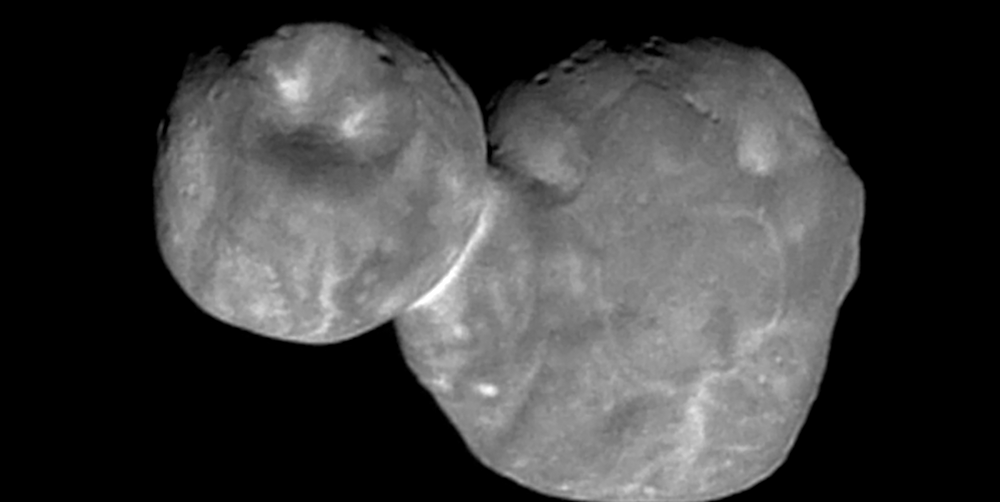NASA Releases New, High-Quality New Horizons Image of the Ultima Thule "Snowman" Asteroid

The New Horizons spacecraft got famous for its Pluto flyby in 2015, but here in 2019, it’s been making discoveries that are just as fascinating.
On New Year’s Day, New Horizons flew past a distant asteroid orbiting far beyond Pluto, which NASA is calling Ultima Thule. The day after the flyby, NASA released an image of the asteroid that revealed it to be snowman-shaped. Now they’re releasing an even higher-quality image showing all of Ultima Thule’s tiny details and explaining some of its mysteries.
This higher-res picture solves one of the problems with the January 2 image released by NASA. That image was taken when the Sun was directly behind the spacecraft, so no shadows are visible, a fact that made it impossible for NASA to determine the terrain of Ultima Thule. With direct overhead sunlight, any hills or craters would look flat to the spacecraft.
This new photo was taken a bit later during the flyby, and shows more of a side-lighted perspective. This view highlights Ultima Thule’s contours, including a prominent crater on the smaller of the two lobes. While at first glance it looks like an impact crater, NASA says it could also be caused by an internal collapse.
At the border between day and night, the image shows a collection of small craters that are almost certainly caused by impacts. These small craters are important because astronomers can use them to estimate the number of small asteroids floating around in this part of the solar system. Such asteroids are so small and distant that it’s impossible for us to survey them with telescopes, so impacts on a larger asteroid are the evidence we have that they even exist.
This is only the beginning of a lot of data New Horizons will send back over the next few months, and future downloads will include even better images along with all sorts of data scientists can use to learn more about this mysterious outer region of our solar system.
Source: NASA
('You Might Also Like',)

